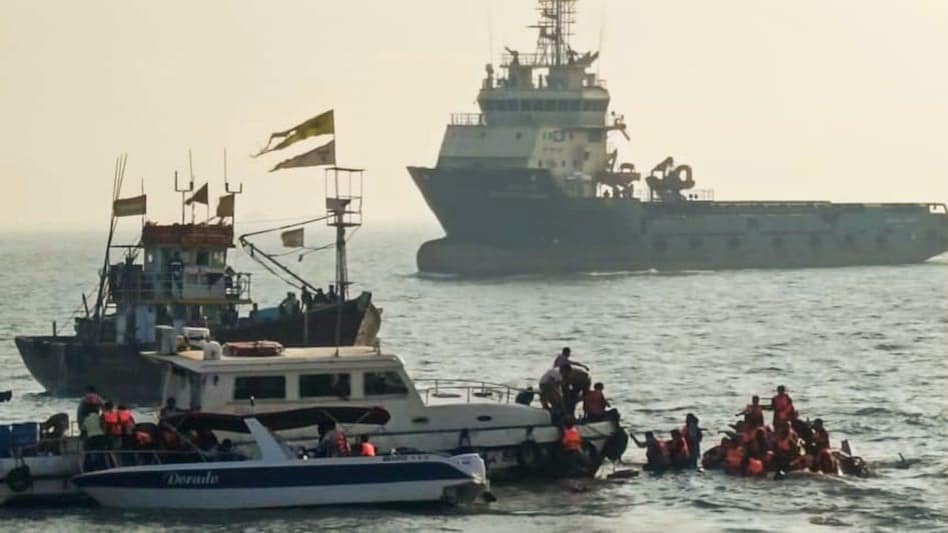SOURCE: AFI

In a devastating maritime incident, fourteen lives were lost when an Indian Navy speedboat, undergoing engine trials, collided with a civilian ferry in Mumbai Harbour, leading to the capsizing of the vessel carrying over 100 passengers. This accident not only underscores the need for stringent safety measures but also brings to light the broader issue of congestion in one of India’s busiest maritime corridors.
The collision occurred in the evening off the Mumbai coast, near Karanja, when the speedboat, which had recently undergone an engine replacement, lost control due to an engine malfunction. The ferry, en route to the Elephanta Caves from the Gateway of India, was overwhelmed by the impact, leading to its capsizing. Immediate rescue operations by the Navy, Coast Guard, and Marine Police managed to save 101 individuals, but the tragedy has sparked a significant debate on naval operations in Mumbai.
Mumbai’s port is one of the busiest in India, handling a significant volume of commercial, passenger, and military maritime traffic. The presence of naval vessels conducting trials or operations amidst this traffic increases the risk of accidents. Relocating to a less congested southern base could mitigate such risks by providing a safer environment for naval exercises and training.
Moving operations to bases like Karwar in Karnataka, where the Indian Navy has been developing Project Seabird, offers a strategic advantage. Karwar provides vast areas for naval maneuvers without the interference of civilian maritime traffic, allowing for more effective training and operational readiness.
Mumbai’s marine environment is already under stress from urban runoff and heavy shipping. Naval activities further exacerbate this. A southern base like Karwar has the potential for less environmental impact and is designed with modern infrastructure to support future naval expansions.
The southern coast offers strategic positioning closer to key maritime routes and potential areas of interest in the Indian Ocean Region. Enhancing presence here could be pivotal in monitoring and responding to regional security challenges.
The recent accident has stirred public sentiment, with voices from social media and local communities questioning the wisdom of conducting naval trials in such a densely trafficked area. Moving operations south could alleviate these concerns, improving public trust in naval safety practices.
Defense analysts and maritime experts have long advocated for this shift. Posts on X and discussions in various publications highlight that while Mumbai’s historical significance as a naval base is undeniable, the city’s growth has outpaced the naval infrastructure’s ability to safely coexist with civilian maritime activities. The Indian Navy has already been moving some of its assets to Karwar, but this incident might accelerate the process.